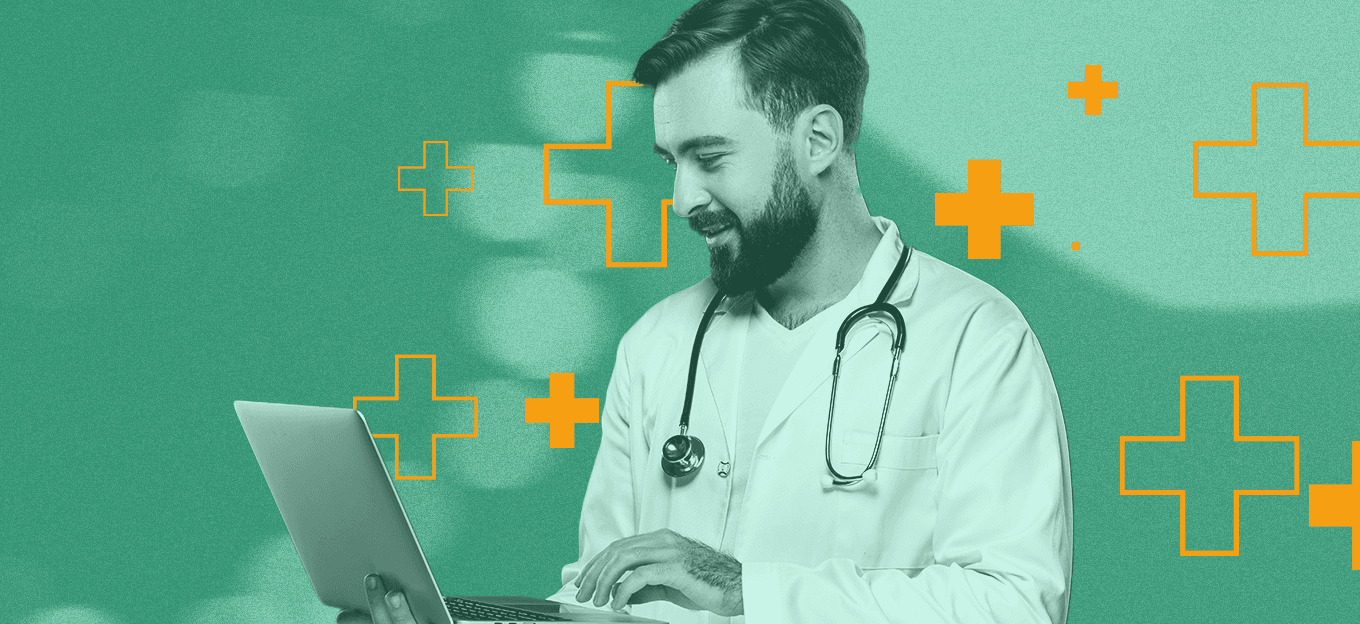Revolutionizing the Healthcare Industry with IoT
Revolutionizing the Healthcare Industry with IoT
- Last Updated: December 2, 2024
Guest Writer
- Last Updated: December 2, 2024



In the past decade, everything from home temperature control systems to vehicles has been fitted with sensors. The Internet of Things (IoT) refers to the millions of connected sensors that connect and share data. This is especially useful in the healthcare industry, where innovations happen daily. Healthcare devices powered by IoT can provide critical diagnostic data that will enable health care professionals to provide better patient care.
Healthcare devices powered by IoT can provide critical diagnostic data that will enable health care professionals to provide better patient care.
The advent of integrating smart technology into the healthcare industry has led to the rise of the Internet of Medical Things (IoMT) in the last few years. IoMT refers to medical devices that can connect to health care institutions and give insights that can be used to develop superior treatment plans.
Take a look at how IoT technologies are changing the face of the healthcare industry.
Automated Insulin Delivery
Suffering from diabetes is a life-long challenge. Patients need to be on their guard at all times and see to it that they are within the recommended glycemic target.
Since this can be a life-threatening condition, a closed-loop insulin delivery system called Open Artificial Pancreas System (OpenAPS) was invented.
OpenAPS is designed to automatically gauge the amount of glucose in the patient’s body and give the patient the right insulin dose. It has an insulin pump and a glucose monitor, and an algorithm that facilitates communication between the devices. Automated delivery of insulin can help them remain relaxed about night-time hypoglycemia, which can often be fatal.
There are numerous versions of this device tailormade for both hypoglycemic and hyperglycemic patients.
Cancer Treatment
Cancer is one of the most life-threatening conditions in the world today. IoT-enabled devices can help keep a check on initial cancer symptoms accurately and craft treatment plans based on necessity.
Innovative wearable devices have also been invented for the early detection of breast cancer. These devices use a combination of AI, machine language, and predictive analysis to track the breast tissue’s temperature over a period of time.
Healthcare research professionals worldwide are on the cusp of developing ML solutions to come up with non-invasive, non-toxic treatment solutions.
Ingestible Sensors
Pharma companies have invented pills with sensors embedded in them that a patient can consume. These sensors transmit information to a battery-enabled monitor patch that is worn by the patient.
Data about the patient’s vitals are sent to the monitor through Bluetooth or the patient’s or caregiver’s smartphone. This is useful for geriatric patients who may not take their medicines on time or may consume the medication in incorrect doses.
Some disposable pills have cameras that can capture images of the inside of a human body. These pills are connected to a device worn by the patient. This device helps in collating these images and sending them to doctors for diagnosis.
Remote Patient Monitoring (RPM)
IoT-based healthcare solutions that can monitor patients' comfort in their home or residential facility can improve healthcare quality. This is particularly useful for patients in locations where there is limited access to hospitals.
RPM wearables offer cost-effective monitoring solutions after an operation. It collects and sends medically accurate patient data to the doctor and facilitates faster medical interventions in clinical abnormalities. This also reduces hospital expenditure for the patient and is beneficial to healthcare institutions by having lower readmission rates and more time for doctors to serve more patients.
These IoT-driven solutions can go a long way in providing top-notch care to the patients. However, innovators need to keep in mind the number of bottlenecks that may crop up in the process. In the next couple of years, healthcare professionals are hopeful that IoMT solutions will be adopted in all parts of the world to provide better healthcare to society.
The Most Comprehensive IoT Newsletter for Enterprises
Showcasing the highest-quality content, resources, news, and insights from the world of the Internet of Things. Subscribe to remain informed and up-to-date.
New Podcast Episode

Moving Past the Pilot Phase in IoT and AI
Related Articles





